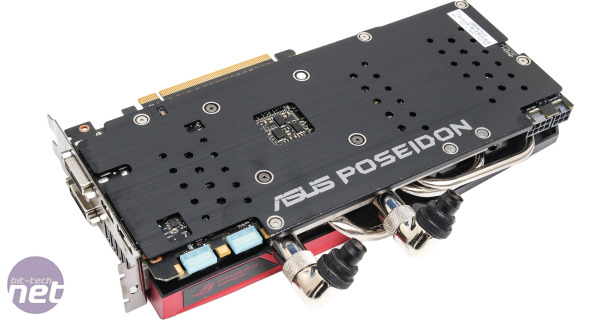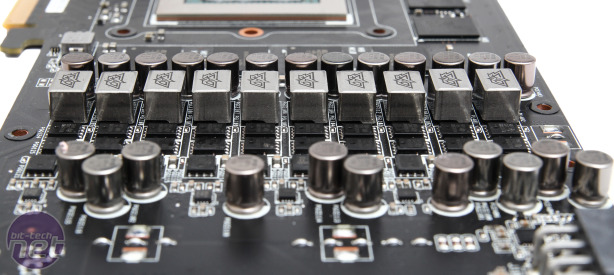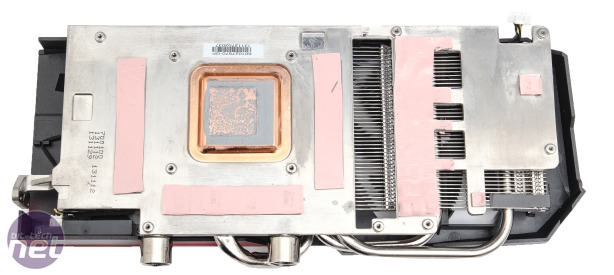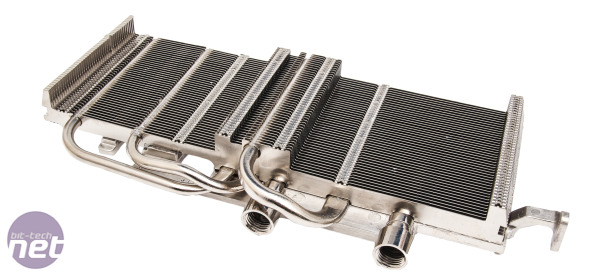Conclusion
There's quite a bit to take in with the Asus ROG Poseidon GTX 780. Firstly there's the price. It's a tad on the expensive side, although not unreasonably so, when comparing the cost of buying a bog standard GTX 780 3GB and slapping a dedicated waterblock on it. As we mentioned earlier in the review, there are waterblocks out there from the likes of Koolance, that work out more expensive, but then the more common EK or Alphacool brands will work out £20-30 cheaper.Click to enlarge
As Asus was keen to point out, though, fitting a waterblock is a hassle and pretty daunting for first timers. The latest high-end graphics cards in particular have a plethora of screws to deal with and none more so than the GTX 780 3GB, plus your warranty will most likely be voided too. Even though water-cooling always has its risks they are that much higher when it comes to voiding the warranty on a £400 graphics card! The Poseidon, in contrast, is ready to be connected to your existing water-cooling system and you're backed up by a warranty too.
In terms of other cards pre-fitted with waterblocks, there's the EVGA Hydro but this costs abut the same, if not more, and doesn't have the backup of air-cooling, for what it's worth.
Click to enlarge
Probably the most important performance factors for this card are the cooling and noise. While the price is just about acceptable, it certainly delivers where cooling is concerned and the fans then become super-quiet as a bonus. Aside from water-cooling, you're not going to get anything quieter. You won't be left wanting here except if you prefer a see-through waterblock where you can see your fancy Mayhems coolant passing through it - sadly that kind of eye-candy isn't possible here.
Click to enlarge
As far as gaming performance goes, the GTX 780 3GB is getting a little long in the tooth and AMD's R9 290X 4GB and R9 290 in particular are constantly snapping at its heels or even surpass it on occasions. The R9 290X costs about the same as a reference GTX 780 3GB but the R9 290 4GB costs significantly less - so much so that you could get a waterblock and graphics card and have nearly £100 to spare. However, prices fluctuate all the time so if the GTX 780 3GB ends up aligning with your particular game title preferences (it's certainly the better option for BioShock Infinite and Skyrim, especially on triple screen setups for example), then its definitely worth considering.

The only technical issue really, are the barb threads - most third party waterblocks have them at right angles to the PCB, which makes installing it much easier and we'd imaging an SLI setup would look much better too. That said, Asus has otherwise nailed it with the cooling; we'd have no qualms doing away with a third party waterblock and using a Poseidon-based graphics card instead. It's not cheaper than a DIY solution, which is possibly what many were hoping for, but its considerably less hassle and the Poseidon has the advantage of not actually needing a water-cooling system to work, which could be useful for testing or if you haven't quite got round to buying the rest of your loop yet.

-
Performance36 / 40
-
Features28 / 30
-
Value19 / 30


MSI MPG Velox 100R Chassis Review
October 14 2021 | 15:04












Want to comment? Please log in.